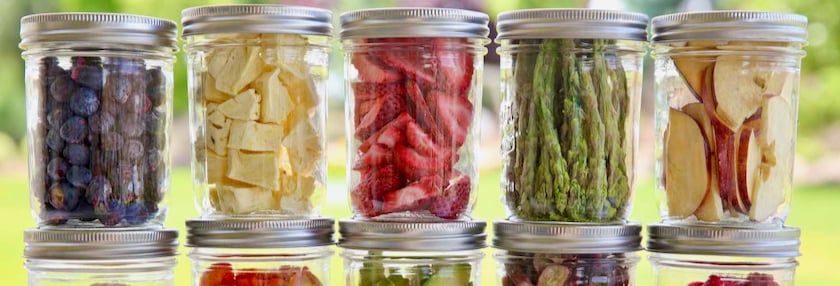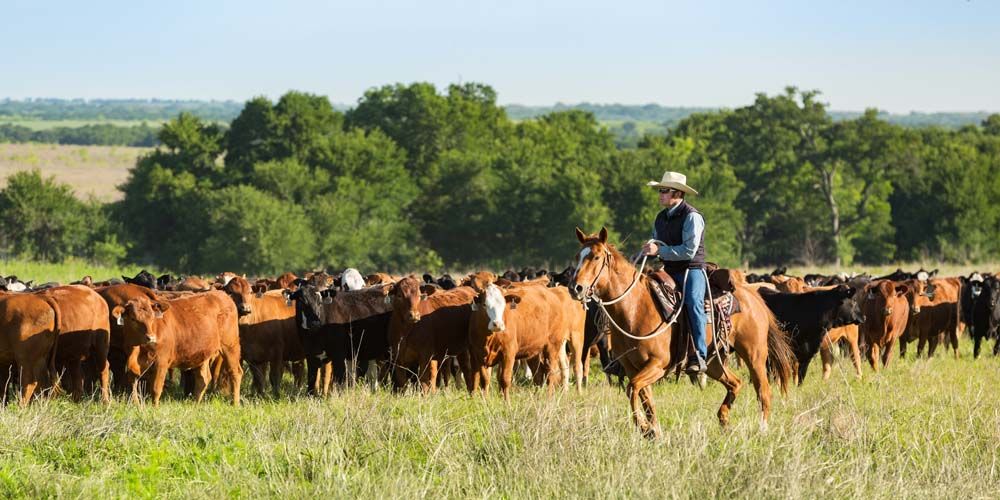Waste Not, Want More?


Saving your garden bounty for later
A well-maintained garden can yield about ½ pound of produce per square foot. That means a 600-square-foot garden could grow 300 pounds of fresh produce worth around $600 annually, the National Gardening Association estimates.
Being able to incorporate some of your garden produce into your daily meals cuts down on some grocery bills. The Consumer Expenditure Survey from the Bureau of Labor Statistics estimates that the average American family spends $6,759 a year on food. While $2,787 of that amount is on the high cost of eating out, nearly $800 is spent on fruits and vegetables.
While planting a garden is a great way to cut down on grocery costs, it only works if you don’t let your extra harvest go to waste. As harvest season ends, many gardeners find themselves with piles of amazing, fresh produce sitting around in danger of rotting before it can be eaten.
Garden-fresh produce can stay “garden-fresh” for only so long.
We’ve all tried to incorporate berries, zucchini, cucumbers, and tomatoes in every meal for days on end, only to realize a) you’re getting sick of them and b) traditional canning or dehydrating doesn’t work for how you’ll eventually use them.
Freezing
One of the easiest methods of preserving garden goodness is by freezing. Depending on what’s harvested, you may get away with just some rinsing and putting into plastic freezer bags. Fresh fruit often goes this route, but harder vegetables require blanching in hot water to stop enzymes from changing color.
Tip: Put your items into portion-sized freezer bags.
It also pays to pre-freeze berries on a tray, before bagging for storage, so they will hold their shape when put into a bag. Fruits for cooked desserts can be coated in sugar which helps prevent freezer burn and have them ready to go after defrosting.
Air is your enemy. To avoid freezer burn, remove as much air from the bag as possible. Some people use a straw to do this, but most of the air can be removed by submerging the filled bag in water up to—but not beyond—the closure. Zip it shut before removing.
Canning
Canning uses hot water to sterilize fresh fruits or vegetables fresh from your garden.
If you haven’t done it before, but are thinking of jumping into this, be prepared for the process to take over your kitchen. Entire books have been written on the subject, but be prepared to acquire canning jars and seals, a funnel, lid wand, ladle, a water bath canner pot or pressure canner, and jar lifters.
Tip: Search the Internet and try your first efforts with someone’s proven recipe.
Freeze drying
A freeze dryer allows you to preserve what you grow because freeze drying locks in both flavor and nutrition.
Freeze drying garden produce, along with leftovers, bulk food purchases, and your favorite recipes, is also a great way to stockpile an emergency food storage—having extra food on hand ensures that you will be prepared for whatever may come.
Freeze-dried food is great for camping, backpacking, and hunting trips, and can provide you with healthy snacks that are fun to eat.
A freeze dryer from Harvest Right (harvestright.com) is both easier and healthier than canning and dehydrating and freeze drying maintains nearly all of the nutritional value of the food. Other methods of preservation, such as canning and dehydrating, use high temperatures that can destroy much of the food’s nutritional value. Plus, freeze-dried food will last much longer – up to 25 years.
Everything you eat
According to the National Gardening Association, more than a third of U.S. households now grow some of their own food.
The best part about freeze drying is that it doesn’t just work great for fruits and vegetables. A freeze dryer is also the best way to preserve meat, fish, dairy, eggs, ice cream, and even fully-cooked meals.
If you are into preserving food, a home freeze dryer from Harvest Right makes sense.
Thanks to Harvest Right for assisting with this article.
Tags:Acreage Accents

Acreage Life is part of the Catalyst Communications Network publication family.
















